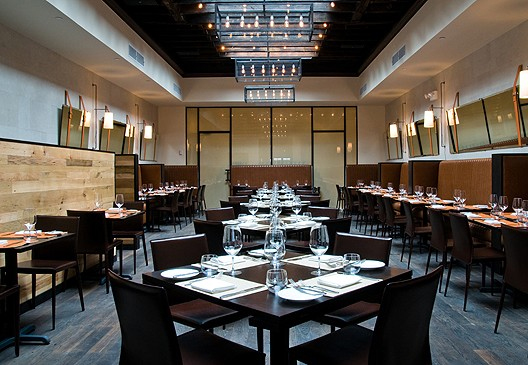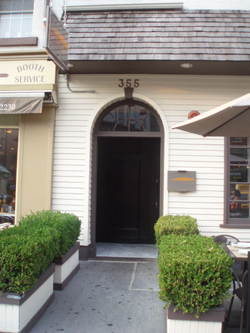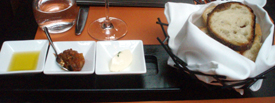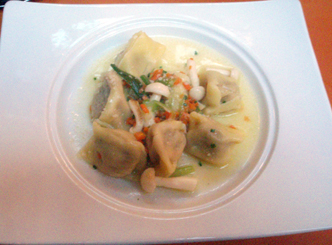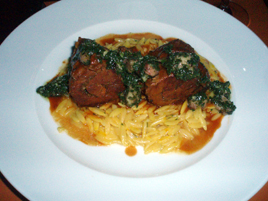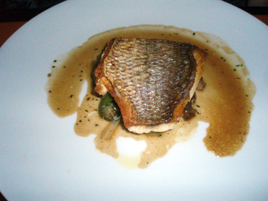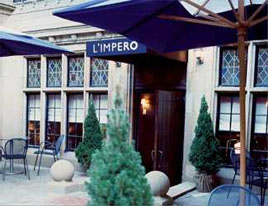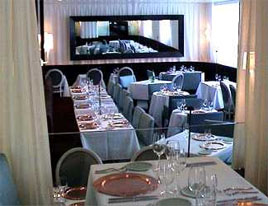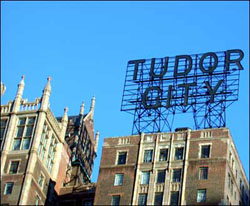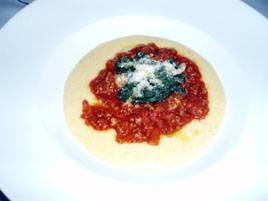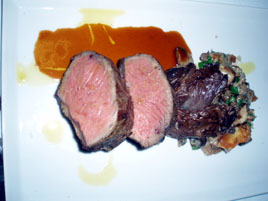
Note: Faustina closed in December 2010. The hotel changed hands, and the new owners wanted to install a new restaurant. Multiple operators have run the space since then. As of January 2014, it is Narcissa, a restaurant from Dovetail owner/chef John Fraser.
*
Most restaurants open around the husks of old ones, as it’s a lot cheaper to renovate a space that already has a commercial kitchen. The transformation that turned the failed Table 8 into Scott Conant’s Faustina was unusually speedy—taking only about a month. Perhaps that’s because its home, in the Cooper Square Hotel, couldn’t do without a restaurant for very long.
Conant has had the midas touch for years, from L’Impero to Alto (now run by Michael White), to Scarpetta. We found the latter wildly over-rated (three stars from Bruni), but perhaps it is more consistent now; we have never had the urge to re-visit.
I assumed that Faustina would be a lazy restaurant. Nothing against Conant, but it was obviously thrown together quickly. To our surprise, Faustina is actually very good, and certainly much more enjoyable than our first visit to Scarpetta.
The menu is evolving. The original concept made us shudder: “small plates”. Neither of the early reviewers, Steve Cuozzo nor Alan Richman, was happy about that. There’s now a section of the menu offering piatti grande, which I’m assuming is new, as no review mentioned it. Richman complained of a menu with nine sections. There are now seven, which is a step in the right direction.
Those menu categories—at least this week—are Bread & Olives ($4–6), Cheese & Salume ($6), Raw Bar ($12–23; selection $68), Piatti ($9–19), Pasta & Risotto ($14–21), Piatti Grande ($31–42), and Sides ($9). Nothing like mixing-and-matching English and Italian.
At the bar, there’s a different menu, mostly a subset of the dining room menu with a few extra items. I compared the two: for the dishes on both, the prices are the same. A La Freida burger (what else?) was introduced this week. Given the popularity of bar dining, they might as well have one menu.
As always at such places, one is unsure of how much to order, and doubtful of whether the server’s advice can be trusted. We ordered—all to share—a small plate, a pasta, and a large plate, and it was still more food than we could eat.


We liked the hefty Lardo-Wrapped Prawns with rosemary lentils ($16; above left), even if we couldn’t taste much lardo. Spaghetti with octopus ragu ($15; above right) justified Conant’s well deserved reputation as a pasta champion.
Oddly, both of these were served at once, after which we were advised that our entrée—er, large plate—would take 25 minutes. Apparently it had not occurred to them that the two appetizers—er, small plates—ought to be served as separate courses.


When they said “large plate,” they weren’t kidding. The Glazed Berkshire Pork Chop ($31; above left) was the largest pork entrée we’d ever seen. The photo doesn’t do it justice. With one more side dish, three people could have shared it. From the descriptions, all of the piatti grande seem to be like that—very large portions that a sane solo diner couldn’t order.
The server presented the double-chop table-side, then whisked it away to be cut into sections. We’re not sure how Italian it is, but it might be the best pork entrée in New York, blowing the Little Owl’s to smithereens. A side of herbed fries ($9; above right) was a greasy mess; the evening’s only disappointment.
The décor, as Richman noted, could be a hotel anywhere. We never visited Table 8, but we understand it is little changed. The trip to the rest room, as many reviewers have noted, is a trek so long you’ll be tempted to leave breadcrumbs to show you the path back home. That’s often the case with hotel restaurants.
Servers wear ties and work with brisk efficiency. A sommelier comes to your table unbidden, though the wine list is neither as long nor as varied as it ought to be. Like everything else at Faustina, that could change.
In sum, Faustina is promising indeed. We don’t know when we’ll get around to returning. Unlike Scarpetta, we’d very much like to.
Faustina (25 Cooper Square (Bowery between 5th & 6th Streets), East Village)
Food: **
Service: **
Ambiance: *
Overall: **

 Friday, April 9, 2010 at 01:27PM
Friday, April 9, 2010 at 01:27PM  Faustina,
Faustina,  Scott Conant in
Scott Conant in  Review Recap
Review Recap 








